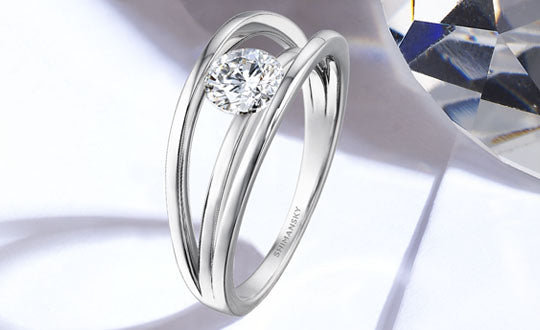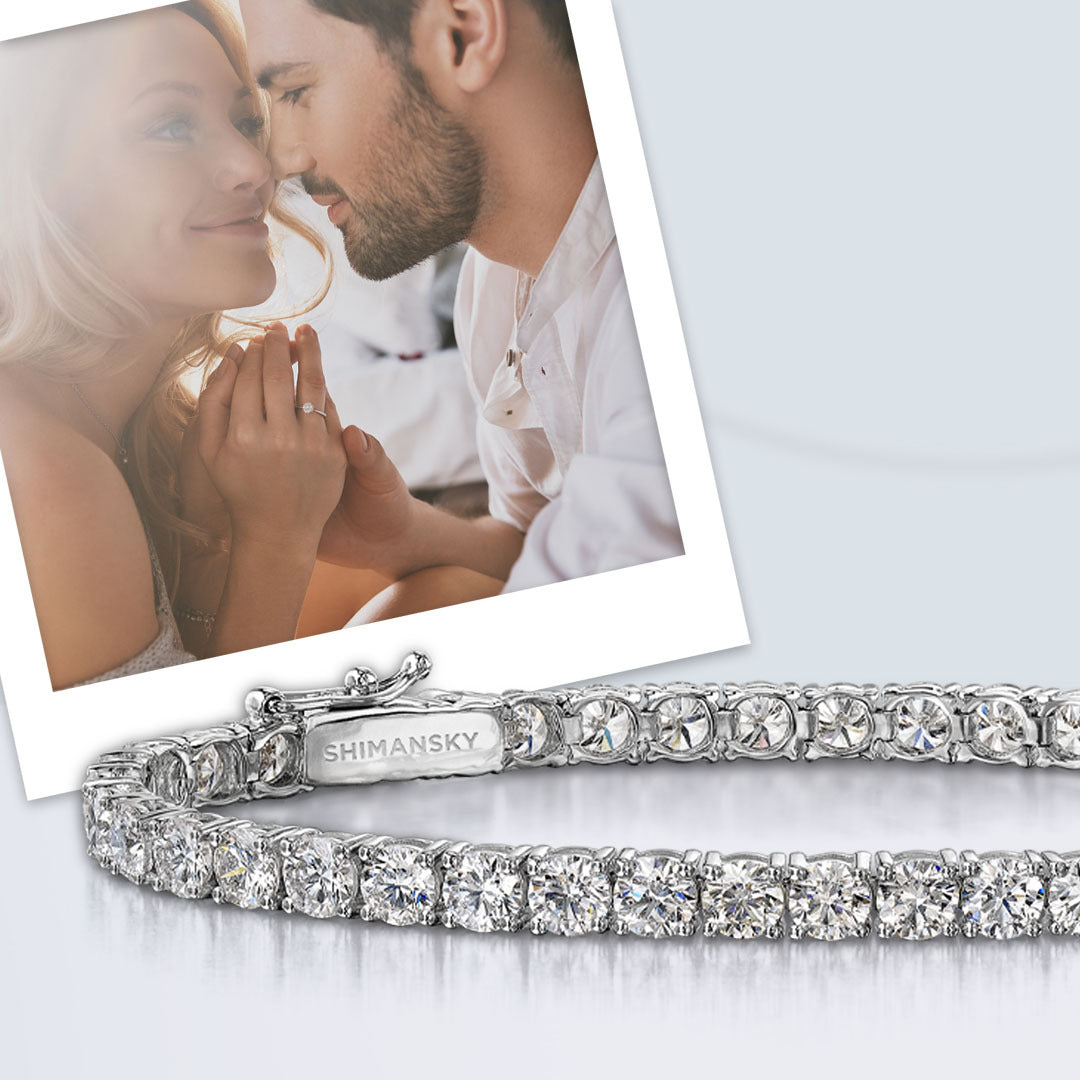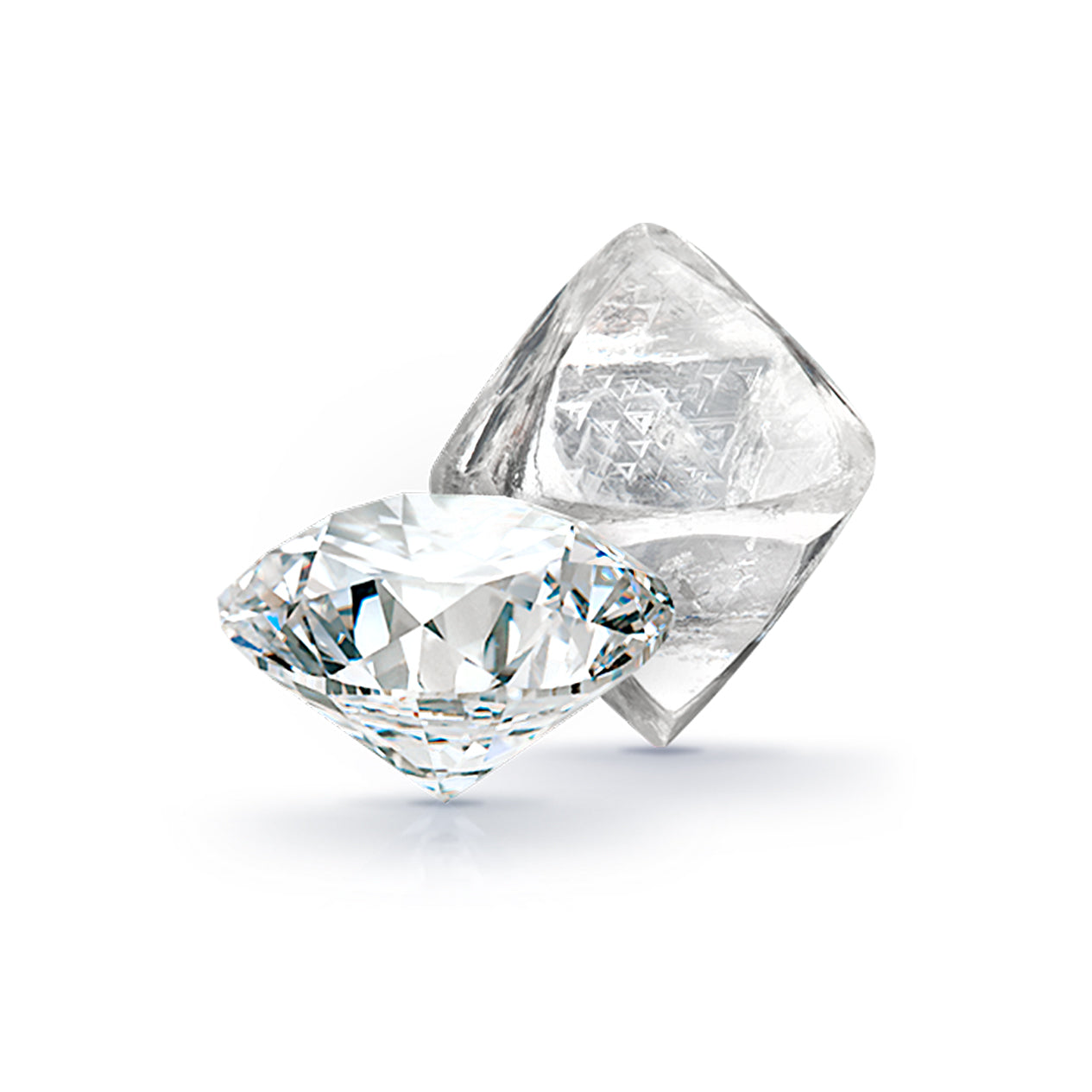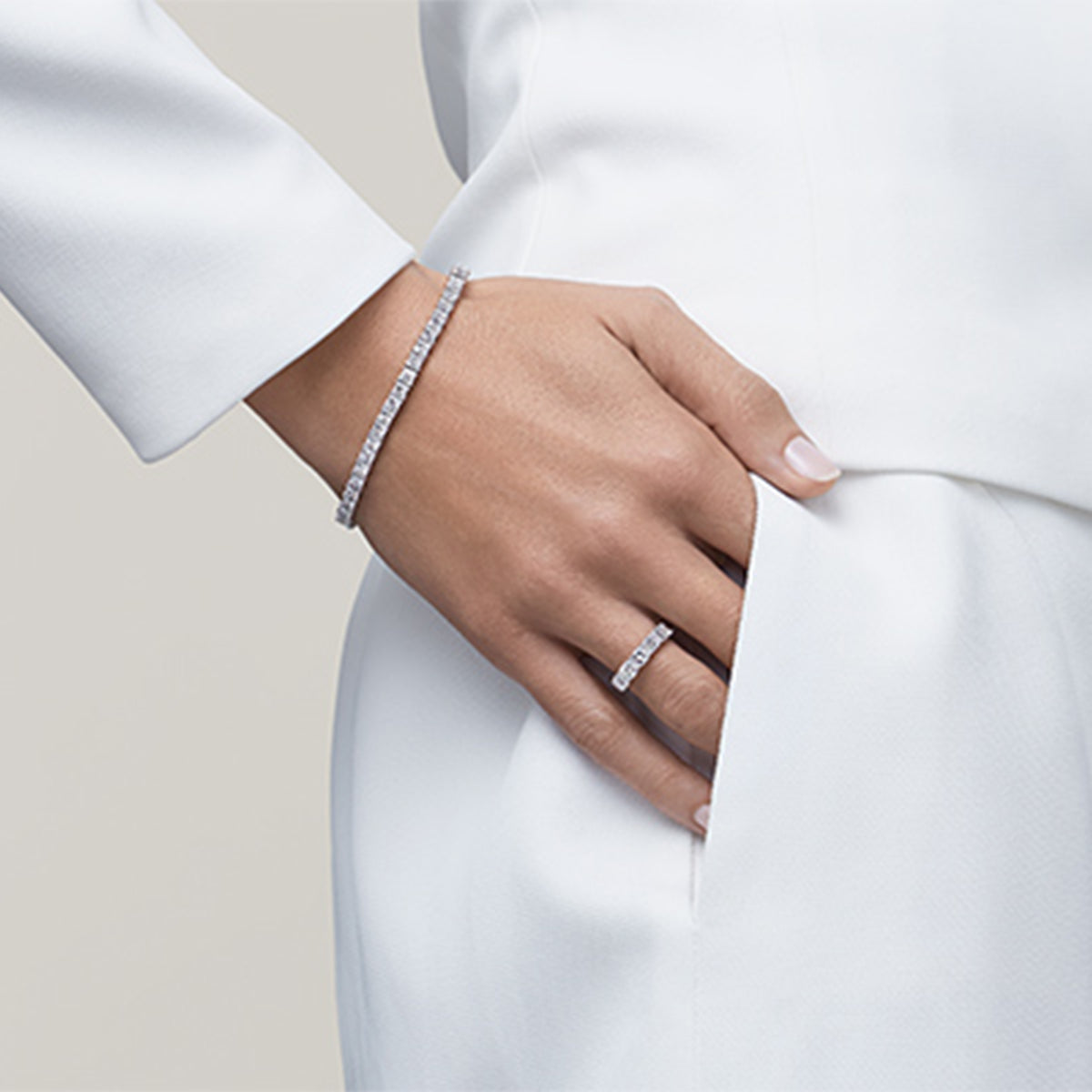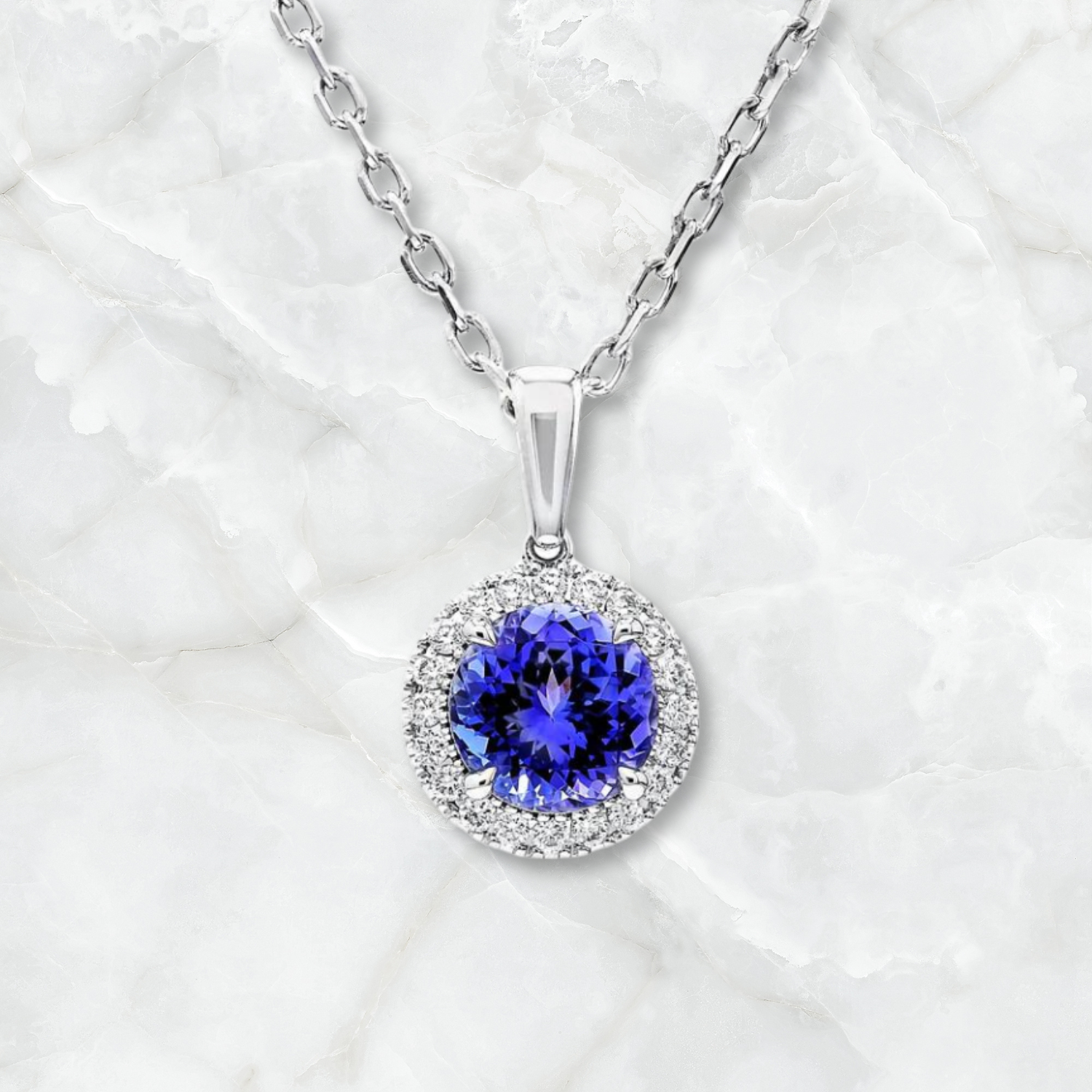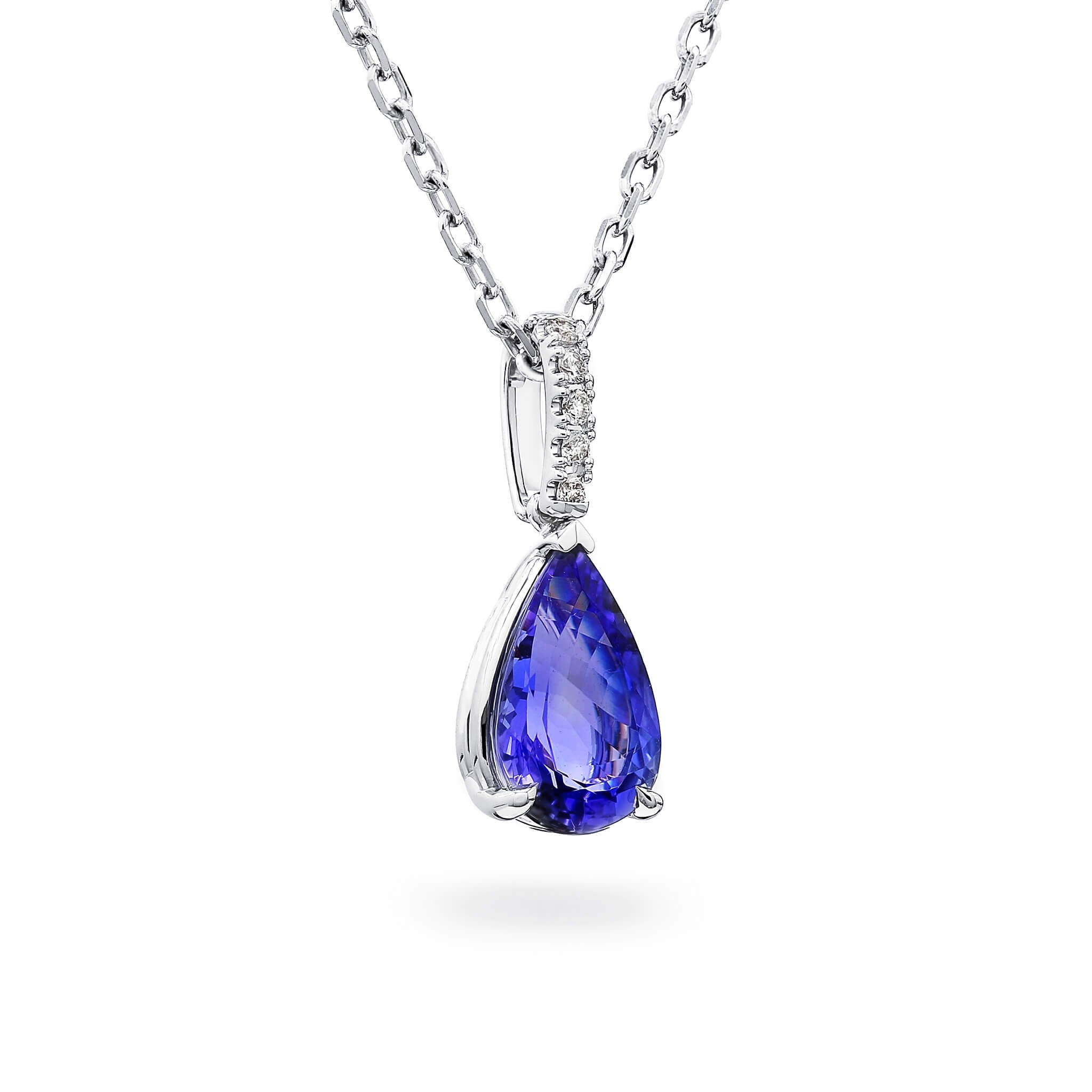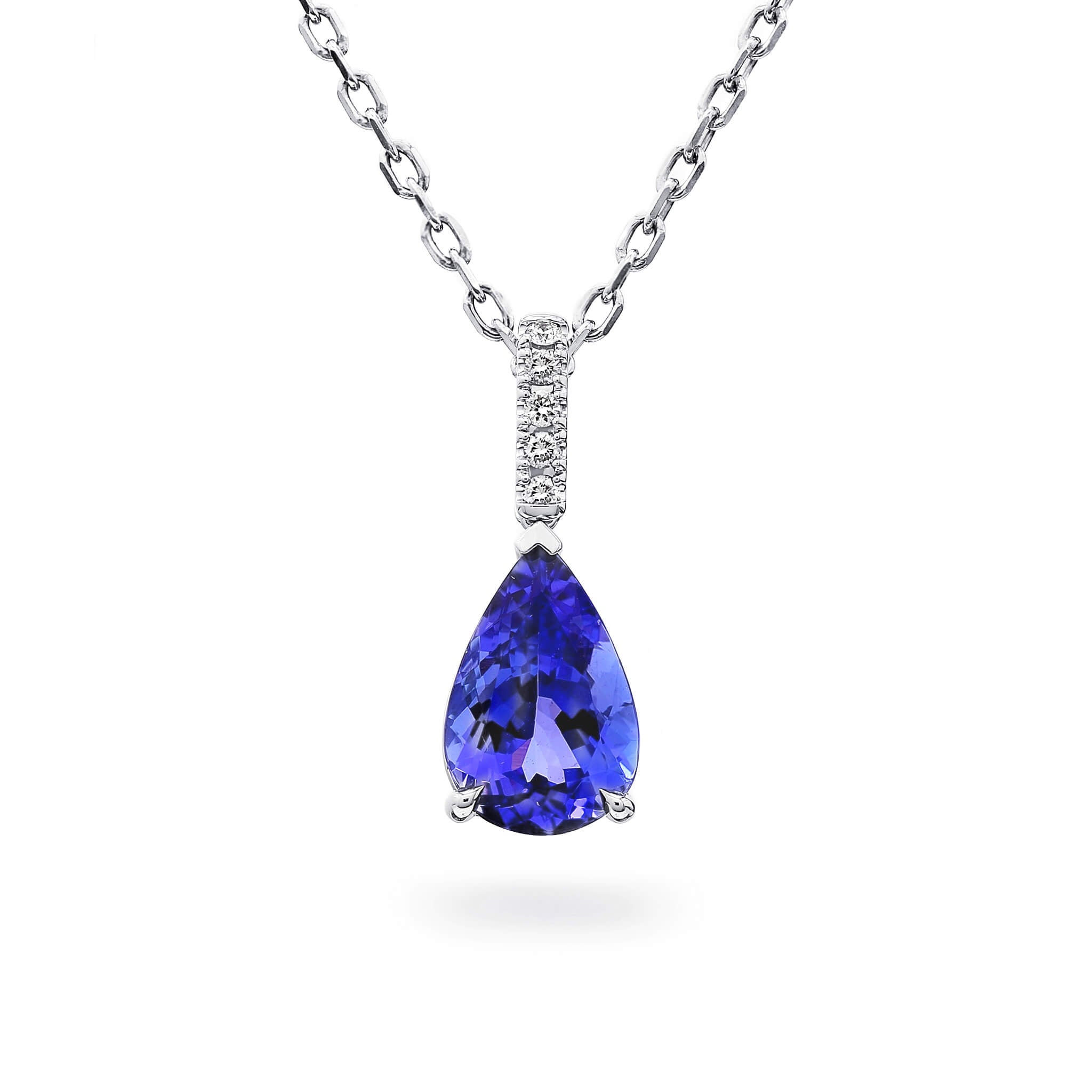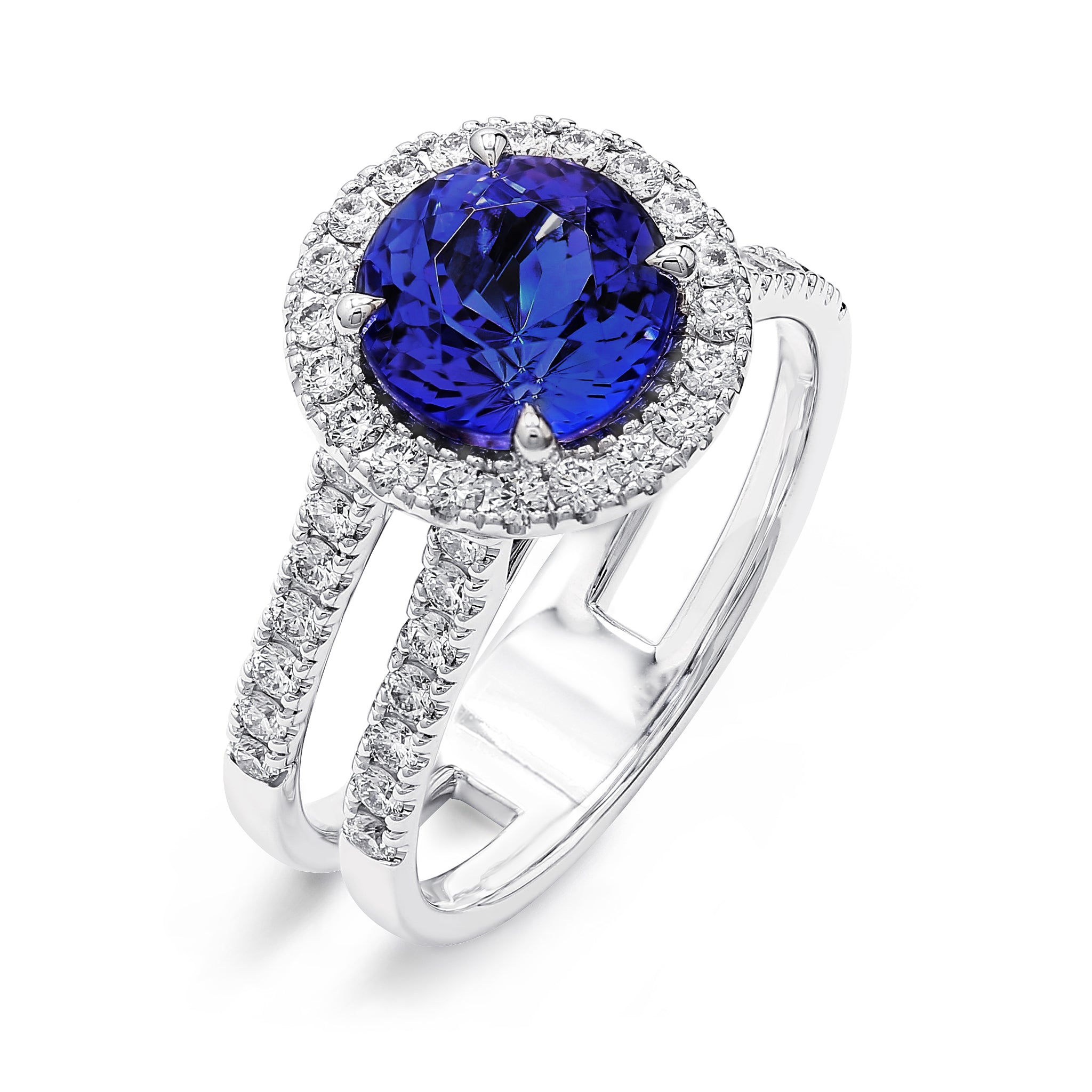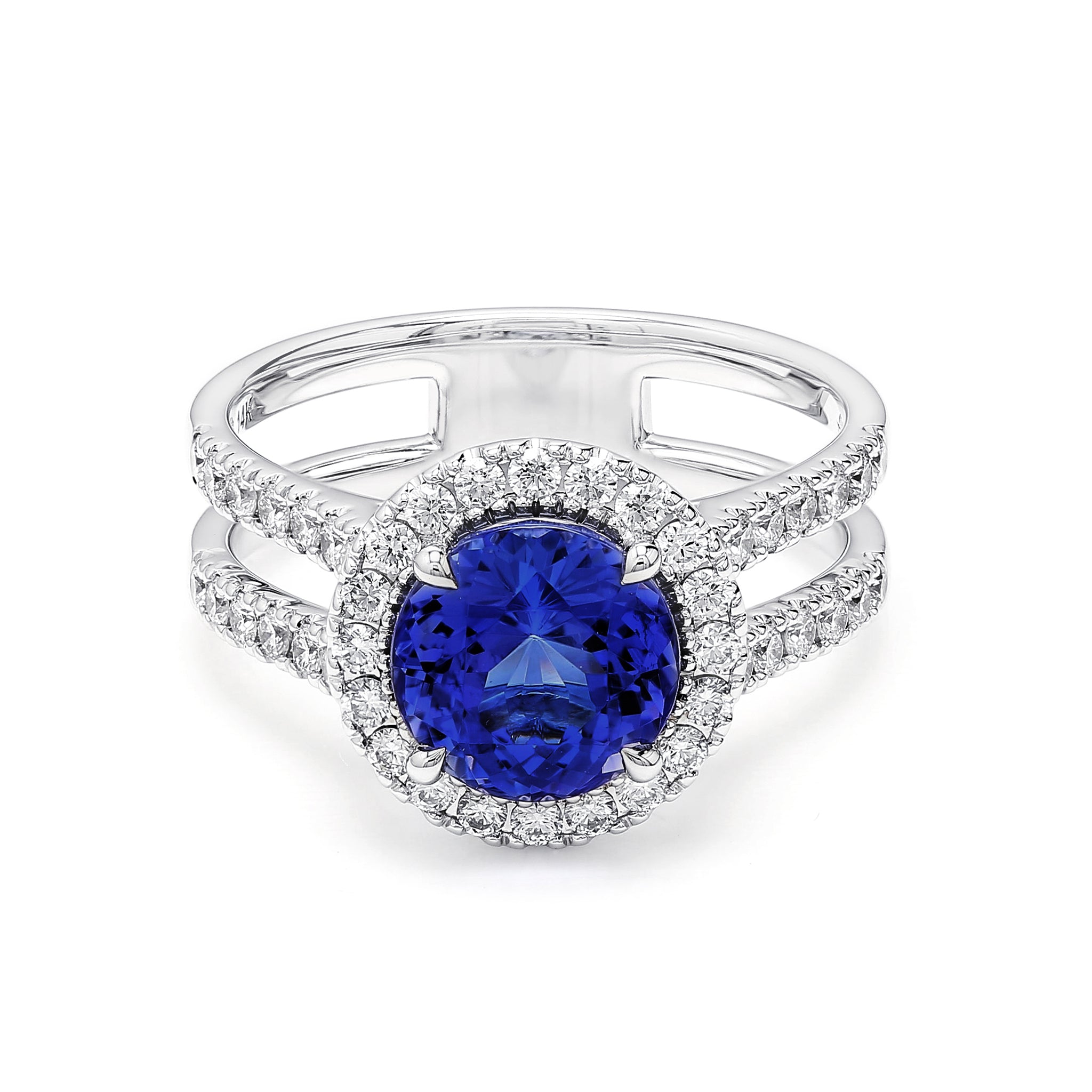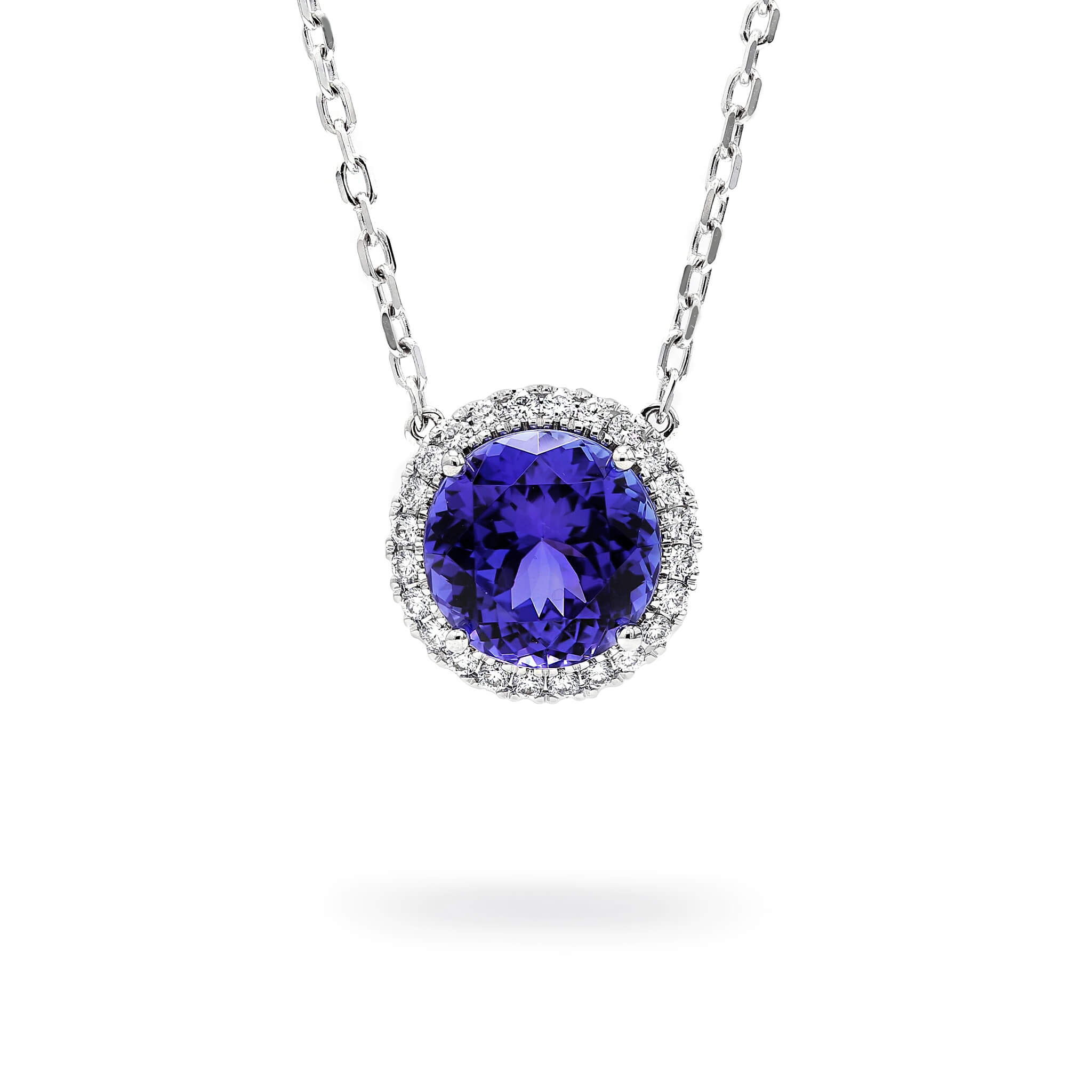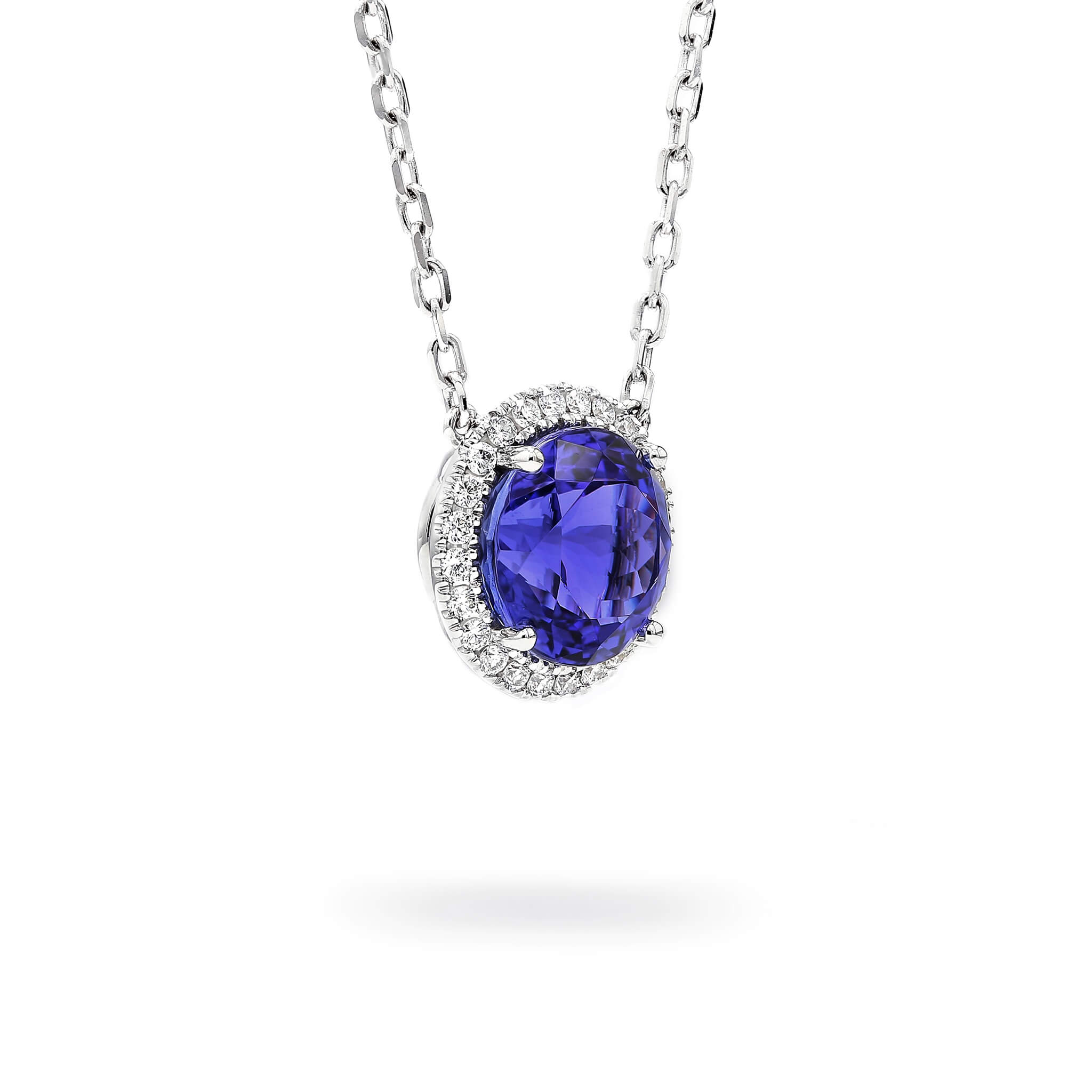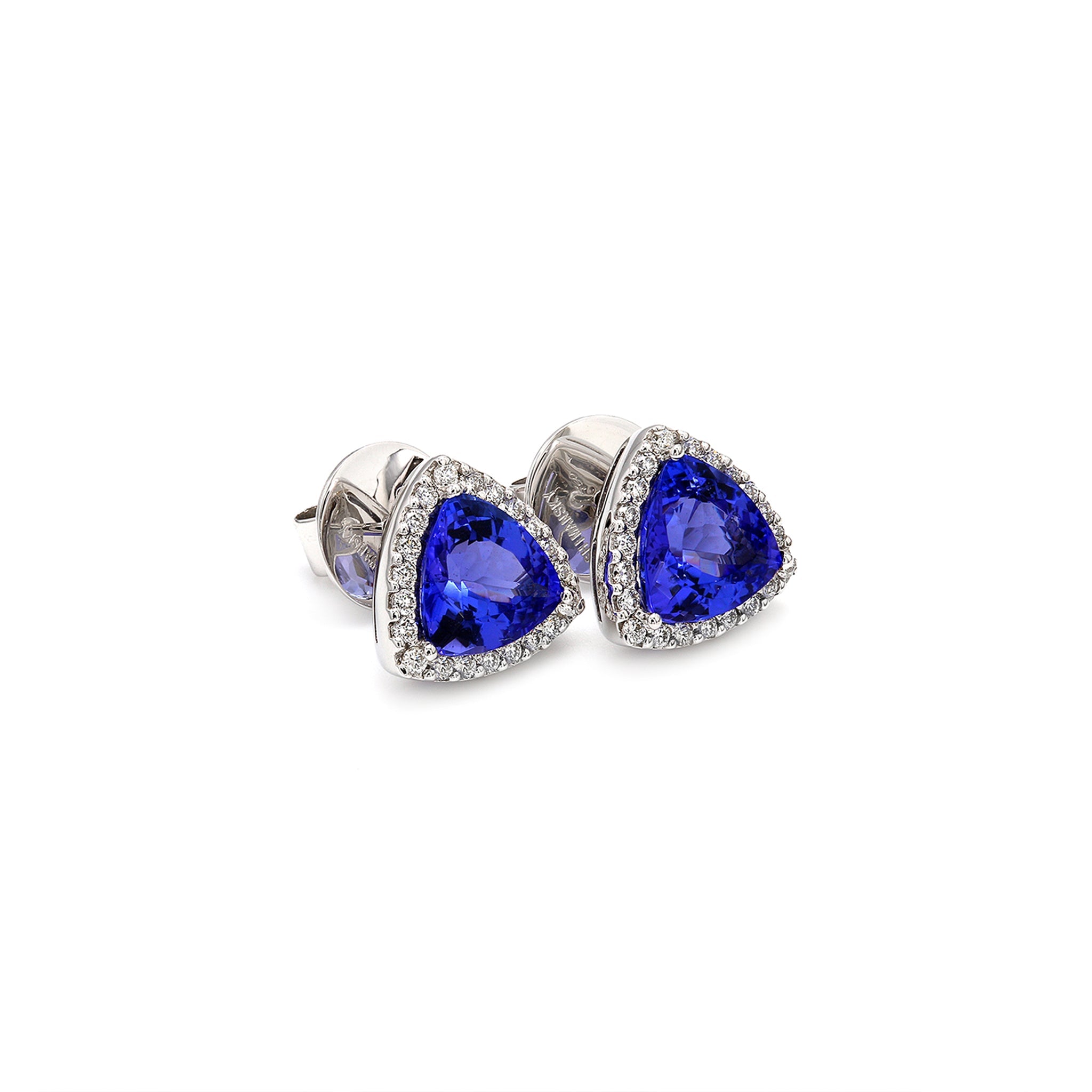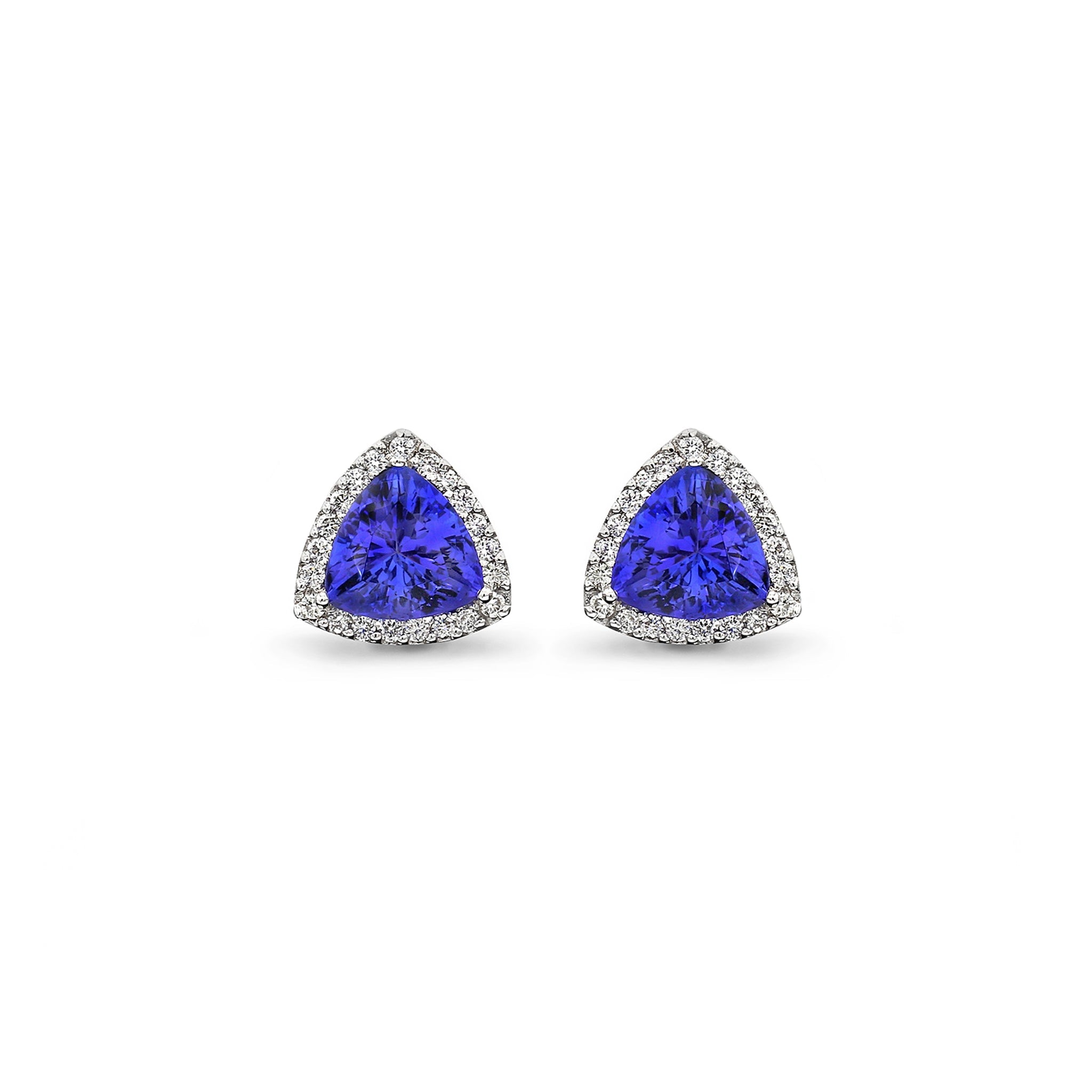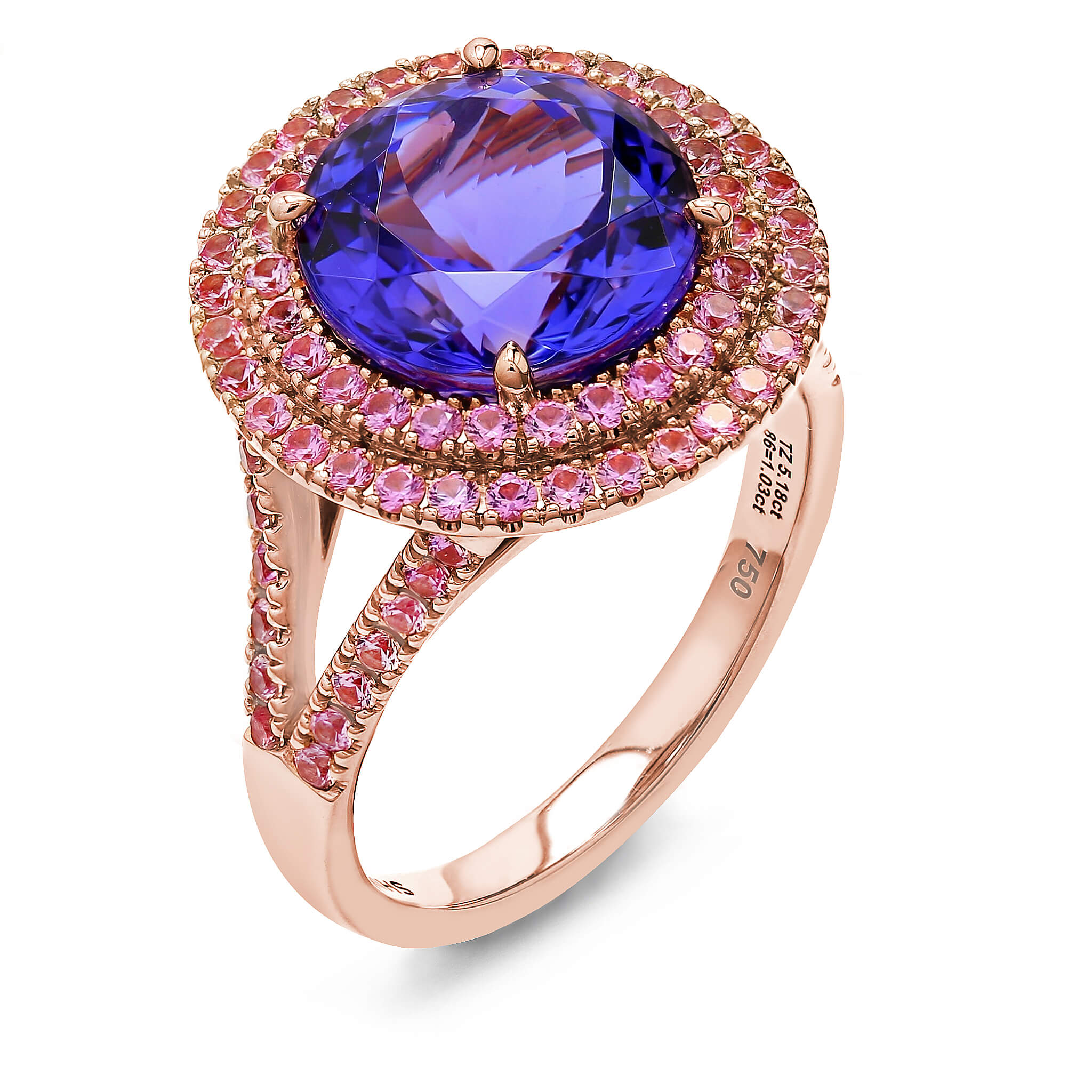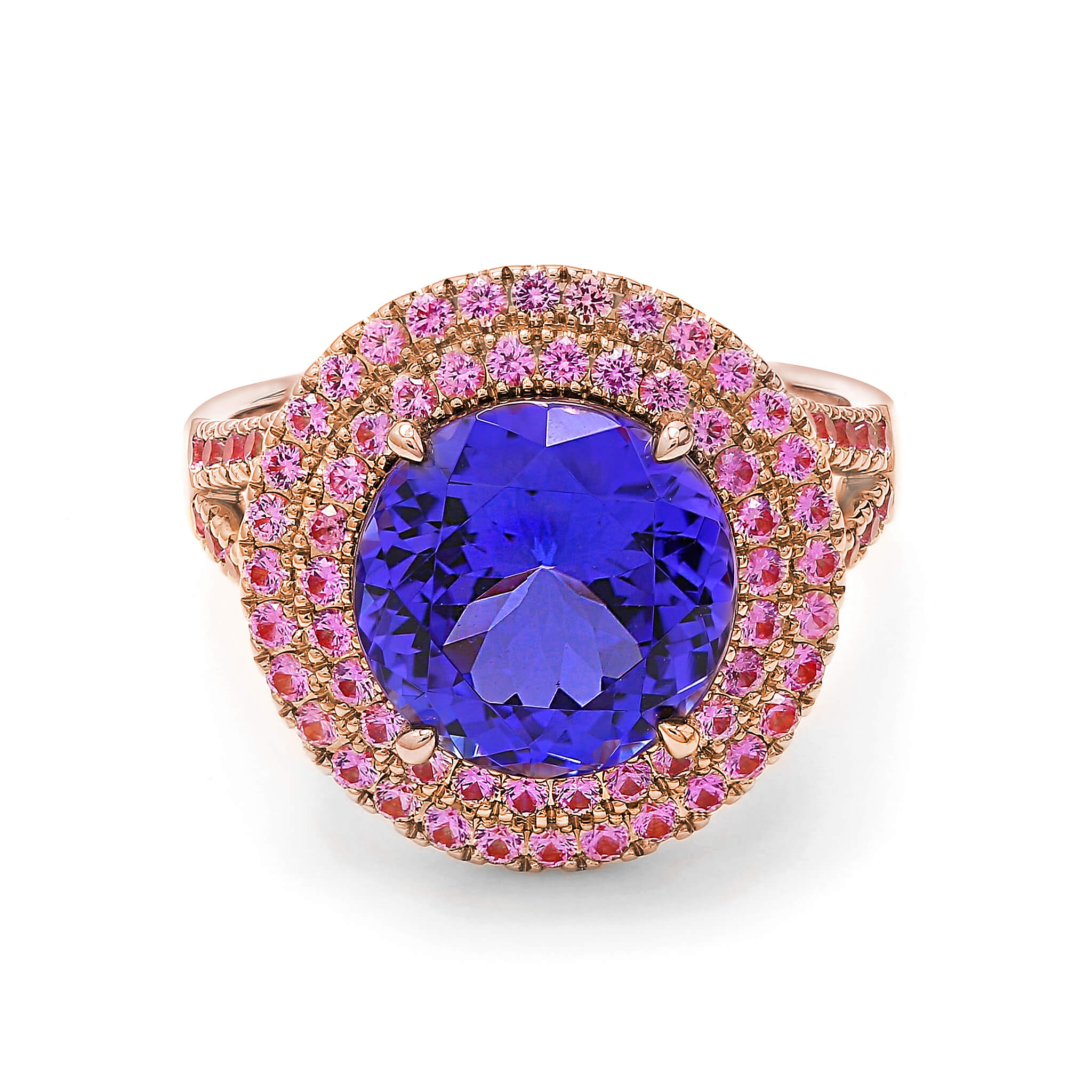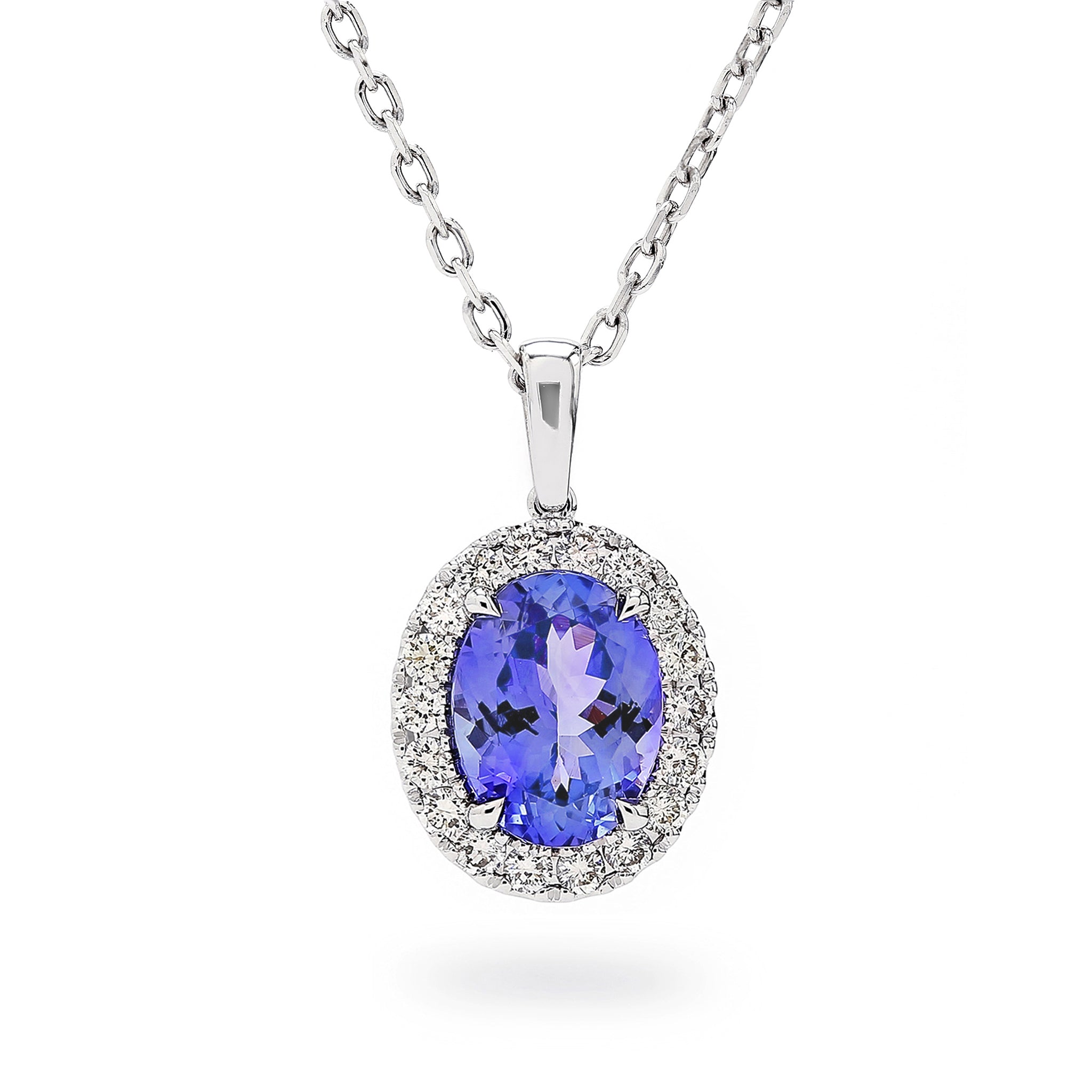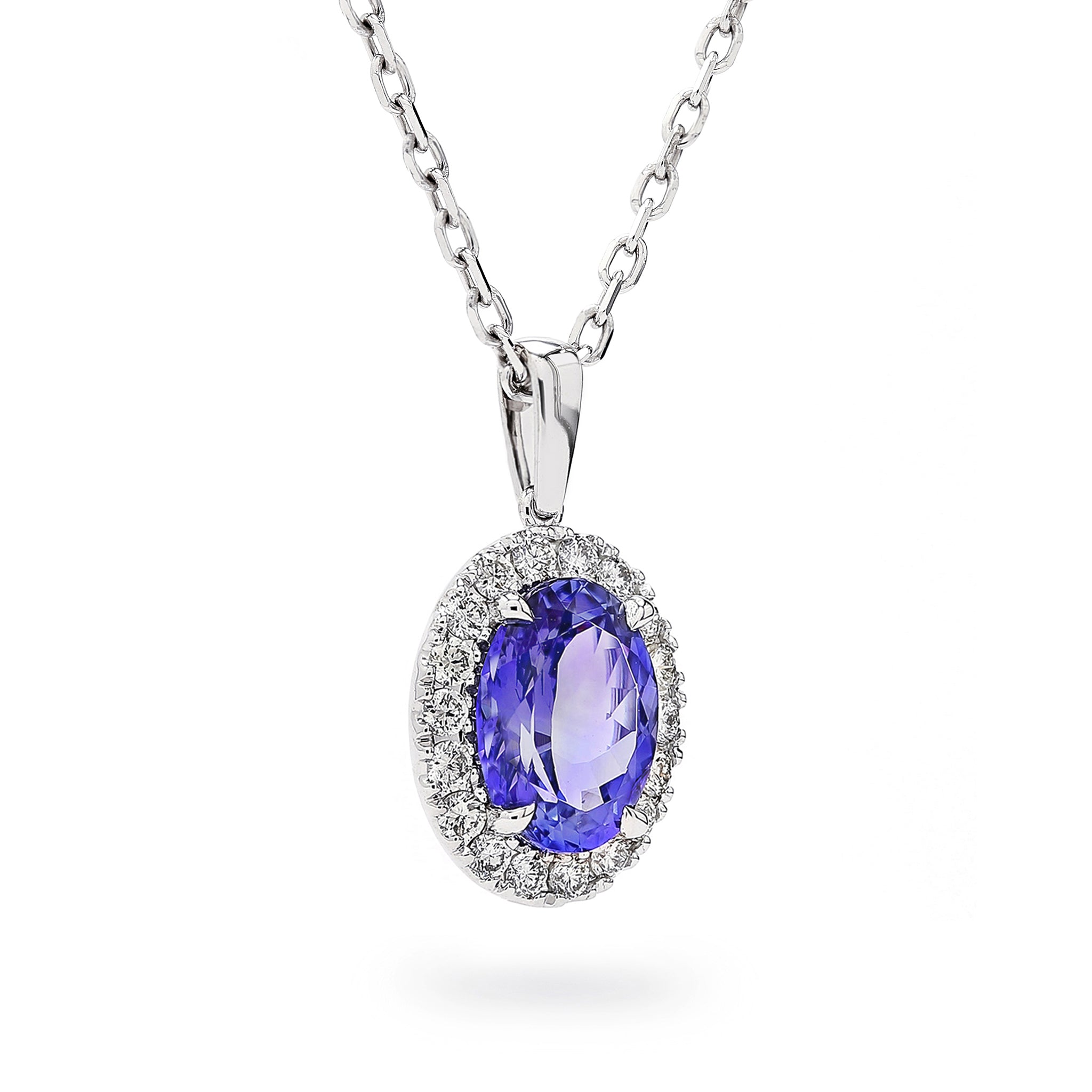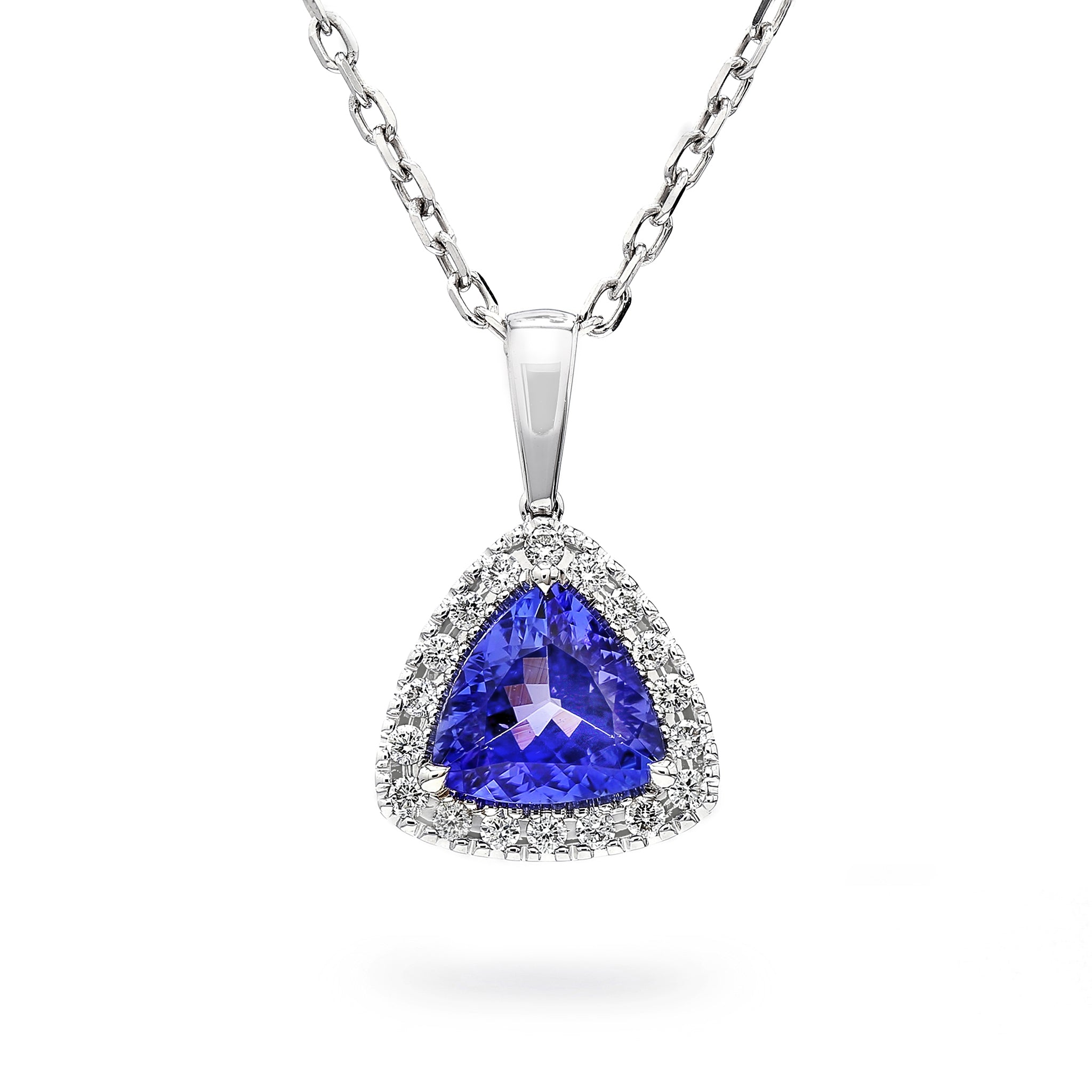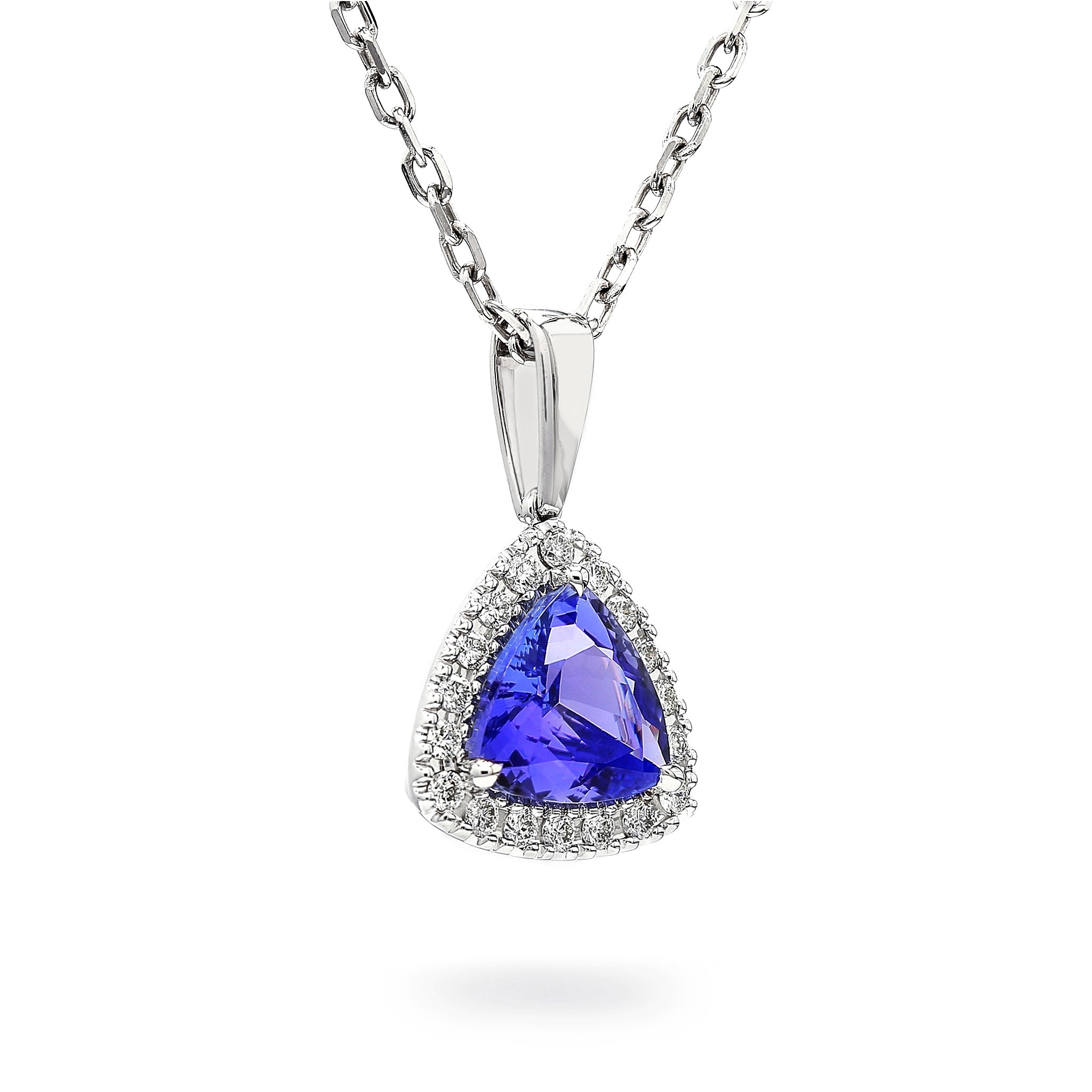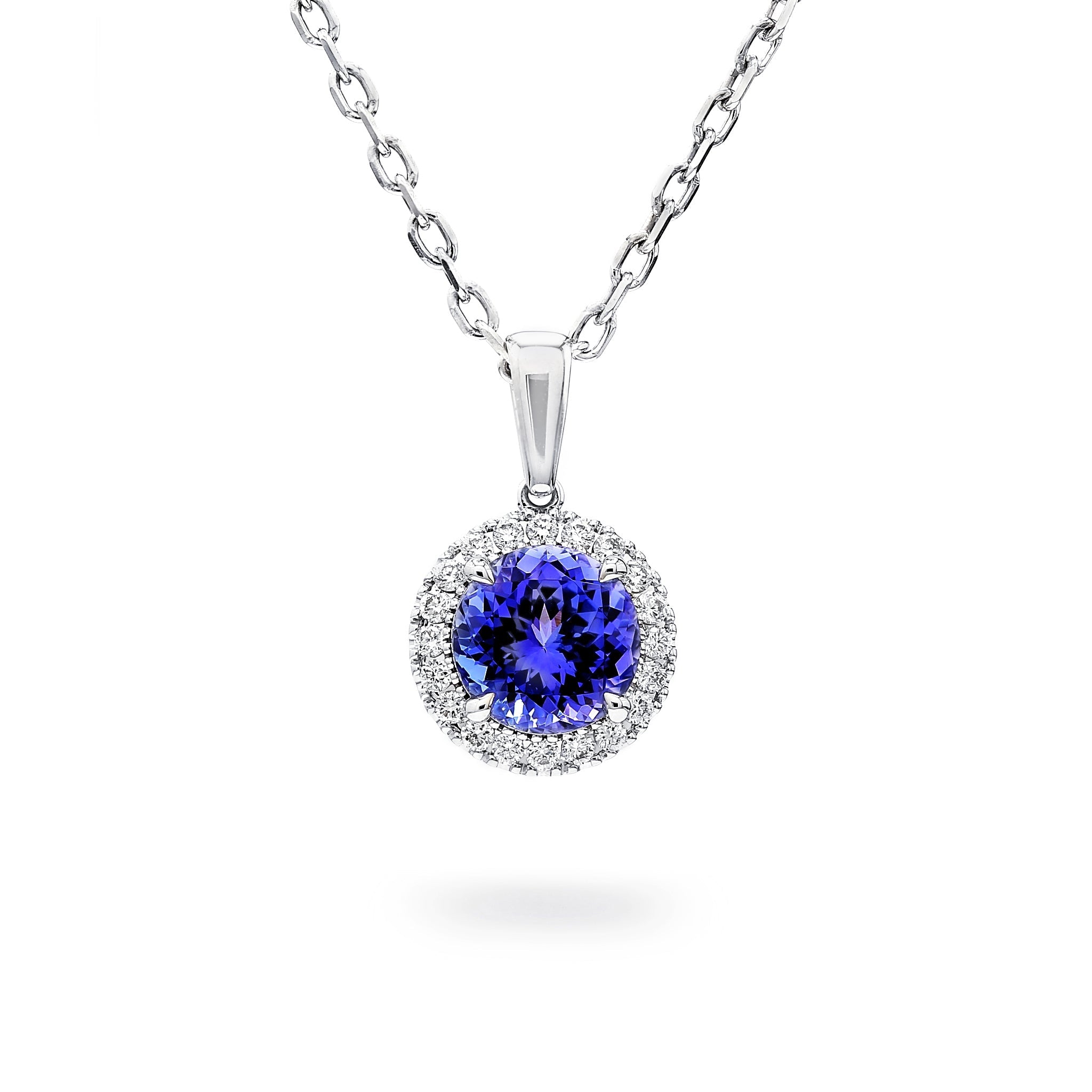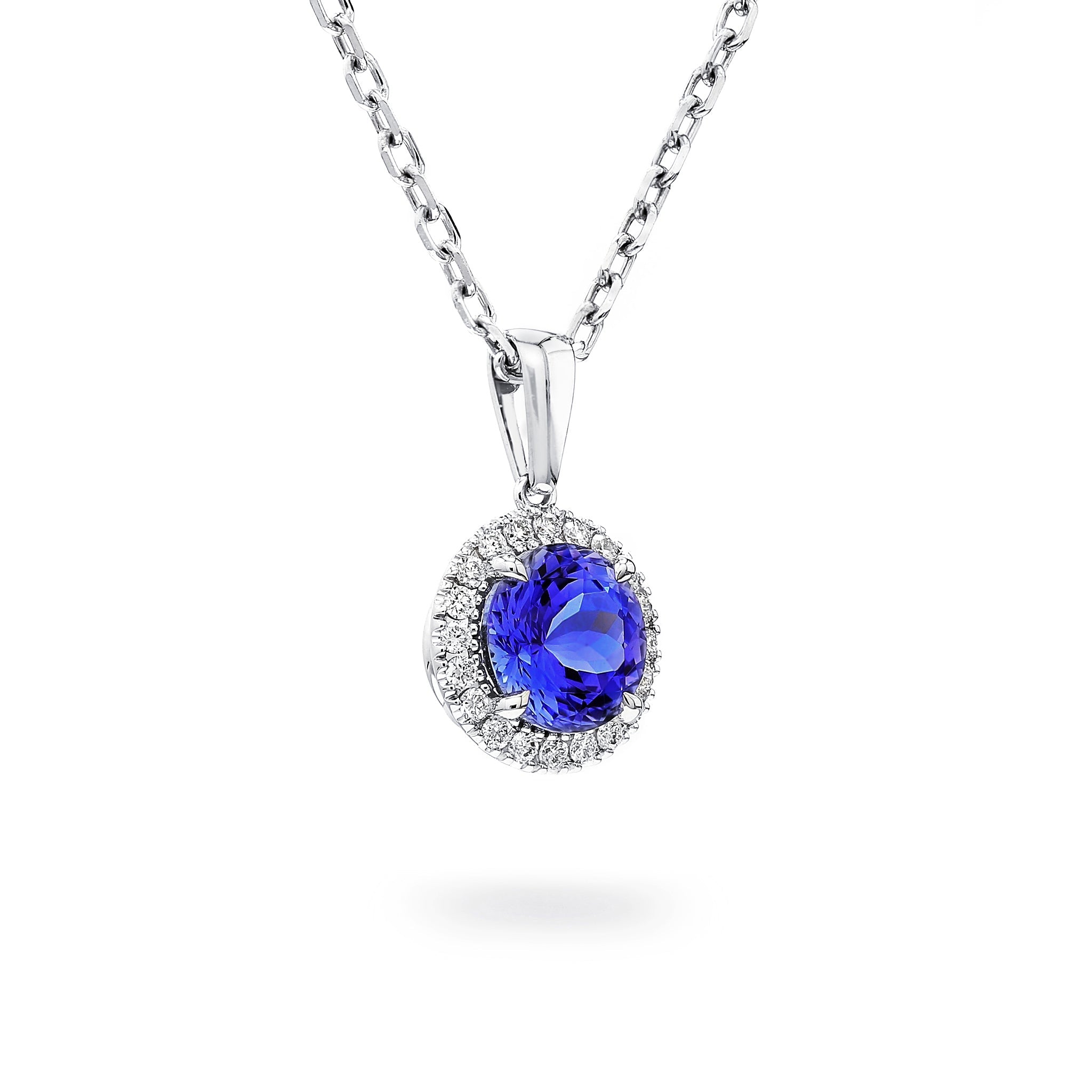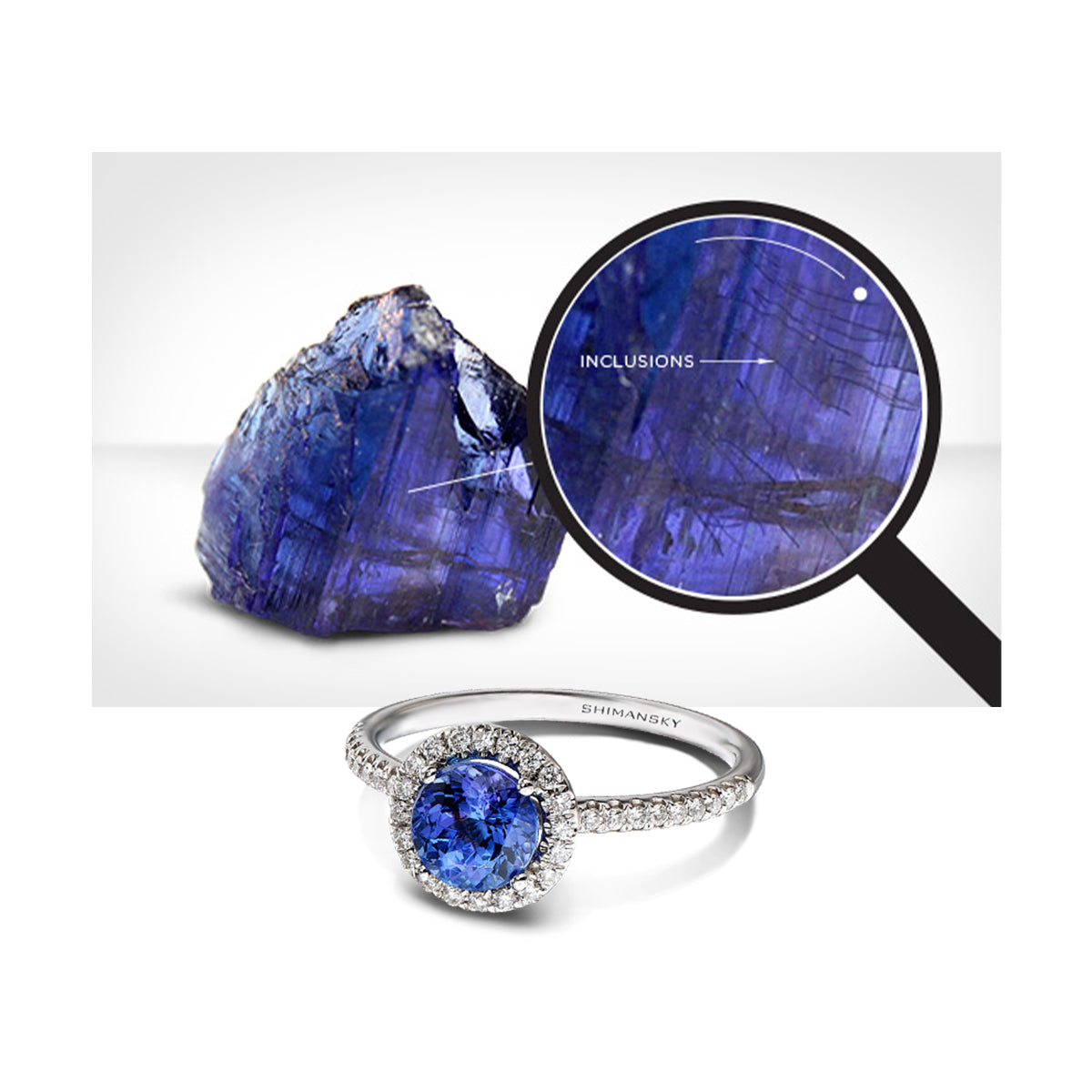
Tanzanite clarity
A gemstone’s clarity refers to the number of natural inclusions or flaws found in the stone. Inclusions or flaws occur naturally in gemstones, and have an impact on the stone’s value. The more inclusions present in a gemstone, the lower its clarity grading, and the lower its value. The clarity of a tanzanite is graded in a similar manner to that of diamonds, and ranges between Internally Flawless (IF), and Included.
When purchasing tanzanite jewellery, be sure to ask the jeweller for a certificate from the Tanzanite International grading standard, which will state the gemstone’s characteristics and clarity grading. Shimansky does not sell any tanzanite with a clarity grading lower than VVS (very, very slightly included). This means that no inclusions are visible to the naked eye, and that the inclusions that are present need to be magnetized up to six times in order to be seen through a scope.

Clarity measures the incidence of natural inclusions found in a tanzanite stone. High clarity gives the stone added fire and brilliance, and the fewer the number of inclusions the more rare and valuable the tanzanite is. Significant inclusions have the potential of putting a gemstone’s structure at risk, as pressure on such a stone could result in a crack, and even breakage.
When it comes to colourful gemstones such as tanzanite, experts are most concerned that inclusions should not be visible to the naked eye. Though tanzanite gemstones are clarity graded in a manner similar to diamonds, less emphasis is placed the number of inclusions visible when viewed through a scope. With tanzanite, the most important thing, is that the gemstone is “eye clean,” meaning that flaws cannot be seen with the unaided eye. The Gemological Institute of America (GIA), classifies tanzanite as a Type I gemstone, which means it is usually flawless to the naked eye.
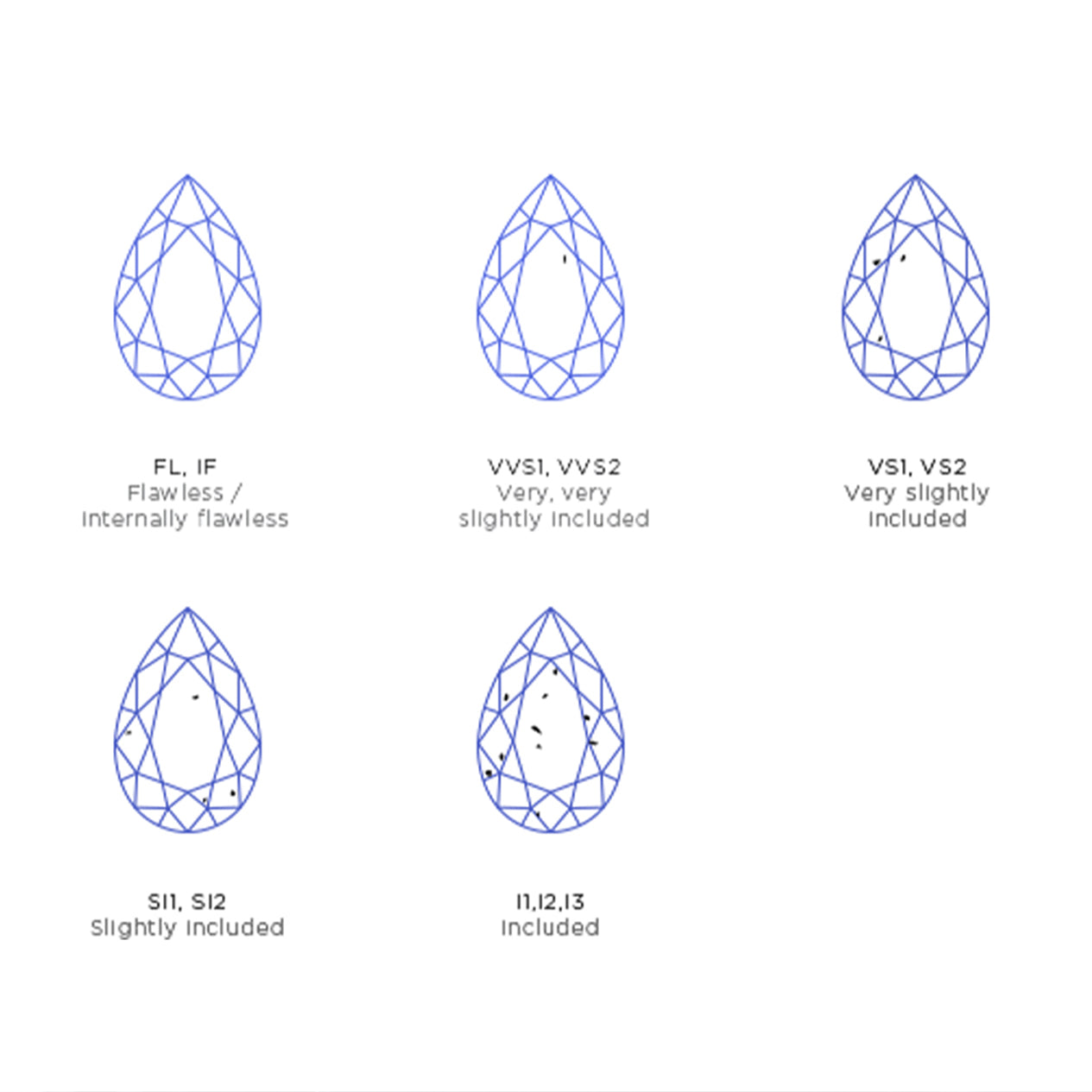
When buying tanzanite in South Africa, and other parts of the world, you may come across various clarity grading scales. Shimansky uses the Tanzanite International grading standard scale for the Ayanda Queen of Tanzanite collection:
- IF – Internally Flawless (no inclusions are present when magnified up to 10x)
- VVS – Very Very Slight Inclusions (inclusions resembling tiny specs are visible when the stone is magnified 10x)
- VS – Very Slight Inclusions (inclusions slightly more pronounced than those graded Very Very Slightly Included are present)
- SI – Slightly Included (inclusions are visible through the crown of the gemstone)
- I – Included (inclusions are visible to the untrained eye)

The location of the inclusion plays a significant part in the tanzanite’s clarity grading. An inclusion located in an inconspicuous place, such as near the stone’s girdle, will have less of an effect on the gemstone’s quality, than if the inclusion was located directly under the table facet. However, a significant inclusion located near the culet or corner of the gemstone, will put the gemstone at larger risk of breakage than an inclusion located deeper into the stone.
When selecting your tanzanite gemstone, be sure to understand your gemstone’s clarity grading, and ask the jeweller if you can look at the stone through a magnifying scope. It is important to be certain that your tanzanite does not contain a significant inclusion in a compromising area, and that it does not have any inclusions visible to the naked eye. Your tanzanite ring, or any other jewellery creation for that matter, will soon become a valuable heirloom to be passed down to future generations. Purchase yours from a reputable jeweller who will help you find the highest quality tanzanite gemstone to fit your budget.
The true value of a Shimansky jewellery creation is only realised when it is worn by the person it is meant for.
Featured collection
Ayanda Tanzanite
